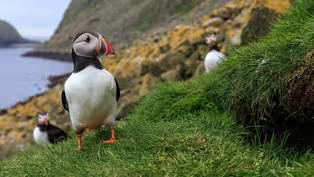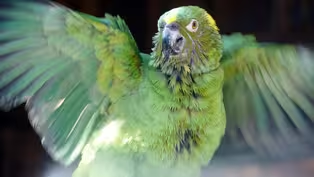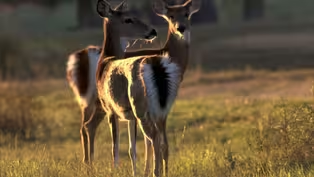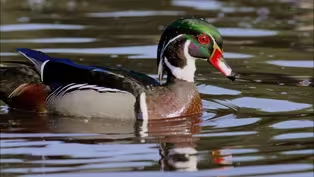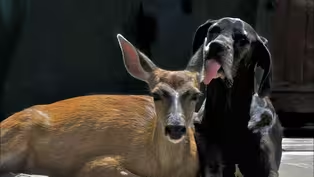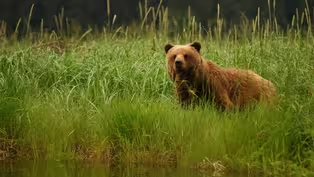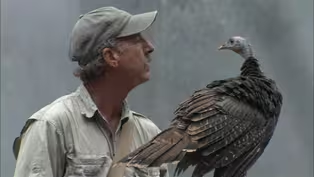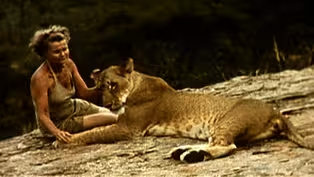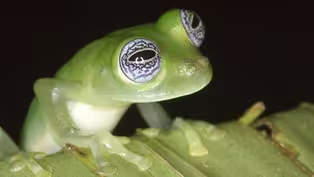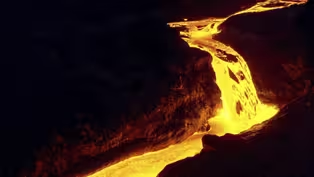
Extremadura: Spain's Forgotten Forest
Season 8 Episode 2 | 55m 59sVideo has Closed Captions
European Wolf, Black vulture, Imperial eagles and genets
Griffin vultures, imperial eagles, genets and other animals native to Africa find shelter in the forest.
Problems playing video? | Closed Captioning Feedback
Problems playing video? | Closed Captioning Feedback
Major support for NATURE is provided by The Arnhold Family in memory of Henry and Clarisse Arnhold, Sue and Edgar Wachenheim III, The Fairweather Foundation, Charles Rosenblum, Kathy Chiao and...

Extremadura: Spain's Forgotten Forest
Season 8 Episode 2 | 55m 59sVideo has Closed Captions
Griffin vultures, imperial eagles, genets and other animals native to Africa find shelter in the forest.
Problems playing video? | Closed Captioning Feedback
How to Watch Nature
Nature is available to stream on pbs.org and the free PBS App, available on iPhone, Apple TV, Android TV, Android smartphones, Amazon Fire TV, Amazon Fire Tablet, Roku, Samsung Smart TV, and Vizio.
Buy Now
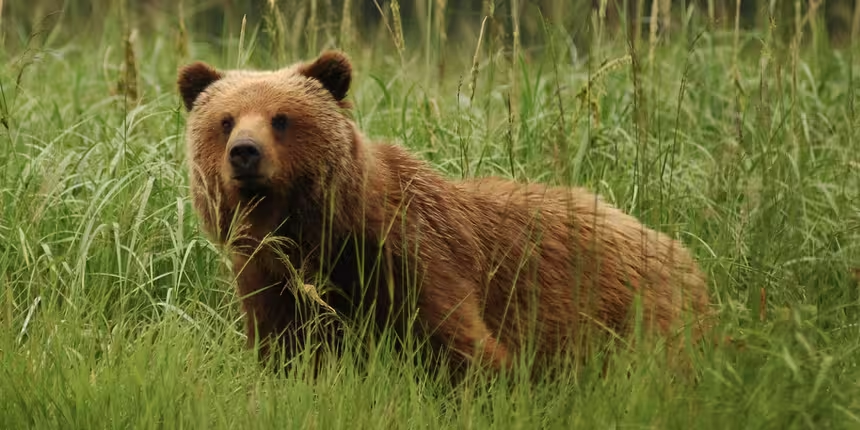
Explore More Ways to Watch
Bring the beauty and wonders of wildlife and natural history into your home with classic NATURE episodes.Providing Support for PBS.org
Learn Moreabout PBS online sponsorshipMore from This Collection
Watch classic NATURE episodes with the PBS station member benefit Passport.
Video has Closed Captions
Animals congregate in huge colonies partly out of necessity and partly for the security. (52m 55s)
Video has Closed Captions
Follow a troop of snow monkeys in Japan to see how they prepare to face the world. (52m 58s)
Video has Closed Captions
Parrots and the bittersweet world they share with humans. (53m 10s)
Video has Closed Captions
Learning about one of our closest neighbors: the white-tailed deer. (53m 10s)
Video has Closed Captions
Take a fascinating look at one of our most familiar birds. (1h 42s)
Video has Closed Captions
Love apparently knows no boundaries in the animal kingdom. (53m 20s)
Video has Closed Captions
Enter a world shaped by bears, trees, and salmon. (50m 9s)
Video has Closed Captions
One man's remarkable experience of raising a group of wild turkey hatchlings to adulthood. (58m 51s)
Elsa's Legacy: The Born Free Story
Video has Closed Captions
The true story that inspired "Born Free". (53m 10s)
Video has Closed Captions
It is the greatest mass extinction since the dinosaurs. (53m 43s)
Video has Closed Captions
Kilauea, on Hawaii's Big Island, is the world's most active volcano. (54m 6s)
Video has Closed Captions
Relationships with cats and dogs are some of the longest and most intimate of our lives. (53m 30s)
Providing Support for PBS.org
Learn Moreabout PBS online sponsorship[dramatic music] [birds squawking] [owl screeching] [birds chirping] [dramatic music] [mysterious music] [triumphant music] [water trickling] - This is the Palace of the Marques de la Conquista in Trujillo, Spain, built with the treasures brought back from the Americas, the New World.
We are in the very heartland of the conquistadors, the Spanish explorers who conquered the Americas.
Cortes, Balboa, Pizarro, de Soto.
Hi, I'm George Page for "Nature."
Towns like Trujillo in the Spanish region of Extremadura were at their glory at the time of Columbus and Queen Isabella in the 15th century.
But when the supply of gold and treasures from across the ocean came to an end, many people abandoned these towns.
The name, Extremadura, tells it all.
This is a hard land.
West of Madrid and extending to the Portuguese border, it's now largely a rural area and one of the poorest regions in Spain, but it does have some of Europe's most important natural treasures.
This is a forest of cork oaks, and, of course, the cork is used by Spain's winemakers.
But more interestingly, the cork forests are the last refuge of some of this continent's ancient fabled predators.
[birds calling] [birds squawking] The sun sets on the Spanish forests of Extremadura.
Night hunters look and listen.
[birds squawking] [wolf howling] [birds squawking] [leaves rustling] [animals calling] [wolves growling] In the darkness, wolves in their lean summer coats gather at a kill.
Spain is one of the very few places in Europe where wolves still exist in any numbers.
[wolves growling] [bright music] [birds chirping] Daybreak and the sun dispels the mists, slowly laying bare the hills of Western Spain.
[gentle music] [bright hopeful music] As its name suggests, Extremadura is a region of harsh extremes.
In winter, it's cloaked in freezing mist, in summer parched and sun scorched.
[gentle music] But in the forest there is shade and shelter, a measure of respite from the sun's fierce heat.
And here, in the remote reaches of Spain's Extremadura is an abundance and variety of life once familiar all over southern Europe, now found only in this remnant of woodland.
[bright hopeful music] [birds chirping] [pensive music] This forest is a refuge for some of the rarest hunting animals in Europe, an imperial eagle carrying prey.
Covering only 160 square miles, this woodland is all that's left of an ancient forest that once spread over most of Spain.
[birds squawking] Imperial eagles were soaring over this landscape long before man settled here some 20,000 years ago.
They saw the Roman legions marching into Extremadura 2,000 years ago but the invading armies had little impact on the eagles and their forest.
In time, the Romans were driven out.
Later, the Arabs swept in from North Africa but the eagle's forest outlived them too.
In the 16th century, the conquistadors left the harsh land of Extremadura to plunder the golden cities of the Incas.
And still the trees kept their vigil.
But over the last few centuries, the forest has been falling steadily to the ax.
Now, in some places bulldozers have been uprooting its ancient oaks.
Yet a small area of original forest has survived and part of it is now protected by the Monfrague Natural Park.
In the 1930s, Monfrague's remote gorges were the hiding place of anti-Franco partisans.
Now these rocky places are the sanctuary of a very special bird.
[birds chirping] The black stork once lived throughout Western Europe.
Today it inhabits only this part of Spain.
[birds squawking] While it's relative, the white stork has adapted to nesting on buildings in many European cities, the black stork nests only in old undisturbed forest areas with streams and pools.
It feeds its young on fish, lizards and frogs.
It was specifically to protect both this rare and beautiful stork and the imperial eagle that Monfrague was established in 1979.
Other birds were threatened too, species normally associated with Africa.
[birds squawking] European black vultures and griffon vultures are present in great numbers.
There's a feeling of Africa here, not only in the far horizons but in the abundance of hunters and carrion eaters.
They gather at carcasses sometimes left by wolves.
[birds squawking] Only in this part of Europe do vultures and wolves live in any significant numbers today.
The question is why?
We start with the forest itself.
[birds chirping] It's an evergreen forest, mostly cork oaks and stone oaks.
Between the trees are shrubs and scrub.
Each tree and bush has its own particular inhabitants.
Ladder snakes.
[birds chirping] Golden orioles.
[birds chirping] A madrono or a strawberry tree in fruit and flower at the same time.
It's the sweet fruit that attracts the birds.
[birds chirping] But the real heroes of the story are the old cork oaks.
The trees whose bark is made into corks for wine bottles.
Cork oaks live for hundreds of years and their canopy is home to a host of creatures.
[birds chirping] [birds squawking] A grand old veteran whose trunk is gnarled by hundreds of winters of frost and rain, hundreds of summers of parching sun.
[birds chirping] The oak forests attract many migrants from Africa.
The short-toed eagle comes here to breed.
[bird screeching] Beneath the oaks is a fertile forest floor nourished by acorns and fallen branches.
It's home to the marbled newt, a species unique to southern Europe.
[birds chirping] Alongside the newts are faster moving reptiles.
The psammodromos is a type of sand lizard.
Psammodromos means sand runner but it's equally at home among the seedling oaks.
It leaves the praying mantis, preferring the grasshoppers.
[birds chirping] With the first warm days of spring, many reptiles have come out of hibernation.
Grass snakes grow to more than five feet in this part of Spain.
[birds chirping] Ladder snakes reach as much as 6 1/2 feet in length.
[birds chirping] [wings fluttering] The short-toed eagle is the only bird in Europe which habitually eats snakes.
It migrates from Africa to the cork oak forests in mid-March.
[bird screeching] Above all, Extremadura is wolf country.
Wolves move in and out of the region through the Gredos mountains to the north.
Eight or nine packs roam the forest at any one time.
Rolling in scent is instinctive behavior, a way of bringing information about the surrounding area back to the pack.
Wolves live in precise social groups and can be both friendly and competitive with each other.
The pack member on the right is indicating his submission to the top or alpha female.
The social hierarchy is strictly maintained especially where food is concerned.
[birds chirping] [wolves growling] Even the top ranking wolf is reluctant to go for another's bone and keeps a certain prudent distance.
The owner of the bone will bite if pushed too far.
[wolf growling] Here the alpha male shows another male just who is in charge.
[wolves growling] The relative rank of each wolf is signaled by the tail.
[birds chirping] If the tail is raised then the wolf is displaying his dominance [wolves growling] Although the oak forests of Monfrague afford the wolf some protection from hunters its safety outside the conservation area is by no means assured.
Wolves are protected throughout Western Europe by the 1982 Bern Convention on the Conservation of European Wildlife and Natural Habitats.
Although Spain signed the convention, a number of its autonomous regions have stripped the wolf of its protected status, and in parts of Extremadura the wolf is still an outlaw.
[wolves growling] Spring is the mating season, only the dominant pair breed and there's tense competition for the right to mate.
Now that the alpha female is pregnant, the pack members are playful.
Perhaps an anticipation of the arrival of the pups when they'll all have to cooperate in raising the young.
[wolves growling] [birds chirping] In early spring, the stony ground comes to life with the flowers of wild lavender.
[gentle music] [birds chirping] [gentle music] The short-toed eagle is nesting now.
[gentle music] [birds squawking] [gentle music] Short-toed eagles have just one chick and the parents bring both venomous and non venomous snakes to the nest, including grass snakes.
[gentle music] [birds chirping] Invariably, the eagles choose a cork oak for nesting but in this part of the forest, they have little choice.
This is the only cork tree here because the area has been planted with Australian eucalyptus, spindly trees that do not grow large enough in the poor soil to hold a nest.
[birds chirping] The parents visit the nest twice a day with food when the chick is close to fledging.
[birds chirping] This time it's not a snake, but an ocellated lizard.
They go for all kinds of reptiles.
[birds chirping] These eagles live in a greatly changed forest.
In the 1970s, the oaks were felled and eucalyptus planted in their place in hopes of producing fast growing timber.
It has been a disaster.
The eucalyptus has been ravaged by pests and has not provided economic returns.
With the removal of ground cover, there is now serious soil erosion and gullying and the water table is falling.
The eucalyptus was a big mistake and these areas will be replanted with oaks.
It's hoped that what is now a virtual desert for wildlife will return to woodland, but it may take two or 300 years to recreate the richness and diversity of the Extremadura oak forest.
[gentle music] The cork oaks are nest sites for many birds and it's the larger ones in the thick undisturbed forest that are most sought after, especially those on the umbria, the cooler north-facing slopes of the hills.
Come June and July, the heat is merciless.
[gentle music] A European black vulture has brought not food, but water to her chick to help it stay cool.
Dehydration is a real threat to the survival of the nest-bound youngsters.
[birds chirping] The young vulture is about three months old and within a week or two of becoming a fully fledged member of Europe's largest population of the species.
It will join 130 breeding pairs and at least as many immature birds in Extremadura.
The adult shades her chick from the sun, panting as she takes the full brunt of the intense radiation.
Weighing up to 25 pounds, with wings spanning more than eight feet, she's the largest bird of prey in Europe.
[birds chirping] To find food, vultures travel beyond thick forest to more open country.
[birds chirping] When they do find food, they also find other vultures.
It seems as if the European black vultures are more preoccupied with display and establishing a pecking order than the actual business of pecking.
Only one or two of them will feed at a time.
The others are more concerned with trials of intimidation.
[birds chirping] They could easily displace the smaller griffon Vultures at the carcass but they're more interested in threatening one another.
[birds squawking] Ravens arrive for what's left.
[birds squawking] In Africa, such scenes are commonplace but the scavengers are long gone from most of Europe.
Only here, in Extremadura, do they still gather to keep alive a memory of that older, wilder Europe.
[birds squawking] A griffon vulture, arriving late, tries to get in to pick at what's left on the bone.
[birds squawking] A young griffon is put in its place by an adult.
[birds squawking] There are about 400 breeding pairs of griffon vultures in Extremadura, but they have never been known to nest in cork oak trees.
They set their sights a little higher.
[gentle music] Griffon's rear there young on cliff ledges high above the forest.
[gentle music] [bird cheeping] [gentle music] Both the European black and griffon vulture populations are holding their own in this part of Spain.
One reason is a good selection of secure nest sites, but there's another very important factor that keeps the scavengers of Extremadura in good shape.
[dramatic music] Every year a great seasonal movement of livestock takes place.
The Spanish call it the transhumancia.
This ancient practice dates back to before recorded history.
The drovers still use Roman roads, the first roads ever built here as they heard their animals between winter and summer pastures.
Great numbers of animals make the trek, up to several million cattle, goats and sheep, and the distance between pastures is sometimes hundreds of miles.
The herdsman's dog still wears a spiked collar to protect it from wolves.
Wolves do sometimes take the younger calves, though far fewer than in the past.
The livestock escapes the worst of the summer heat by moving to high mountain meadows or areas with a large and permanent water supply.
[water whooshing] The transhumancia, this great pastoral migration, is an essential feature of animal husbandry in Extremadura, and it's a very effective use of the land, exploiting different grazing areas at different times of the year.
Once it has been decided to move to new pastures there's no stopping.
Lambs are born along the way and following the flocks are the wolves.
As they say in Spain, a wolf is fed by its feet.
There are many births and there are some deaths too.
One way or another, there is plenty to prey on and plenty to scavenge.
- [Drover] Hey!
- [Narrator] The transhumancia is the major factor in the survival of many of the predators and scavengers here.
This is why vultures and wolves can live in Extremadura and in the undisturbed forest they can breed too.
[pups whining] This she wolf's pups are just two days old.
[pups whining] She licks them to stimulate elimination and to keep them clean.
[pups whining] During the wolf's whelping season, shepherds and their dogs will search for the dens to destroy the litters.
The wolf must choose a remote location to escape discovery.
[pups whining] The mother is thirsty, but before venturing out she checks that all is clear.
A wolf lives by its wits as well as its feet in Extremadura.
[birds chirping] She suckles her pups for six to seven weeks.
After the first three weeks, she also begins bringing them meat and the pups soon develop a hierarchy of their own, early training for the complex relationships they'll form later in wolf society.
[pups whining] [birds chirping] In a nearby sand bank, other families are hidden.
A colony of bee-eaters, brilliant summer visitors from Africa, which have tunneled deep into the bank to raise their young.
[birds chirping] [birds chirping] Feeding the youngsters can be an awkward business.
Some of these tunnels are 10 feet long and there's no room to turn around.
[birds chirping] The bee-eater's tunnels are protection against most predators except for one.
A ladder snake is on the prowl.
[dramatic music] [birds chirping] [dramatic music] [birds chirping] This time the snake finds the tunnel empty.
But over the season, the snakes take their toll of young bee-eaters.
[dramatic music] [birds chirping] The steeper areas of the region have been left undisturbed over the centuries because they've been of little use to man.
It's the flatter areas that humans have exploited.
Here the trees have been thinned to produce a sort of parkland known as dehesa.
[birds chirping] The dehesa is a system of agriculture as old as the transhumancia and is found only in Spain, Portugal, and North Africa.
The land is plowed every four years.
Until recently, this was done by hand with oxen.
A cereal crop is sown between the oak trees if the soil permits.
Over the next two years, pasture is allowed to grow, and finally, in the fourth year the land is left fallow.
This rotation of the dehesa means regular winter grazing for the transhumancia.
The oaks provide shade for the animals and for the grass.
They also help to hold water in the poor Extremadura soils.
Tree branches are cut to make charcoal and provide fodder for goats.
Cutting is limited by law to prevent over exploitation.
The trees and in fact the whole dehesa system provide for people and for wildlife.
[birds chirping] Several kinds of evergreen oaks grow here.
The small oaks are browsed by goats and become thick bushes.
Eventually, one branch will sprout from the center and grow into a full tree.
Nearly a hundred species of birds nest in the oaks, including a Chinese species.
The azure-winged magpie's main habitat is around Beijing and it's always been a mystery why it also lives in this part of Spain.
There's a theory that it was brought back from the East by early Spanish traders but a more plausible explanation is that the magpie's range once stretched all the way across Europe and Asia, and over thousands of years, it has declined, leading the two populations continents apart.
[birds chirping] The azure-wings have to contend with the host of predators hunting among the dehesa oaks.
The black-shouldered kite is another bird that occurs in China, but its main home is Africa.
It preys on small birds including young azure-wings.
Here it has caught a corn bunting.
[birds chirping] Azure-wings nest close to one another, almost in colonies, so there are always several parents on the alert.
[birds chirping] But the black-shouldered kites are more concerned with courtship.
The male let's his female take food from him.
[birds chirping] It's not the kites that have caused the alarm.
[dramatic suspenseful music] [dramatic suspenseful music continues] [birds chirping] A ladder snake climbs toward the azure-wing nest.
The whole colony unites to distract it.
[birds squawking] [birds squawking continues] The young are crouched down in the nest.
The snake has missed them.
[birds squawking] The magpie's combined mobbing has stopped the snake from investigating this particular tree any further.
[birds squawking] Away from the trees, out in the open, it's the snake that's vulnerable.
[grass rustling] [birds chirping] The short-toed eagle catches many of its snakes between the trees on the dehesa.
It grips them close to the head, then attempts to immobilize them.
This particular snake is not poisonous but the eagle will take vipers which are venomous.
Surprisingly, the eagle is not immune to venom.
It relies for protection on the thick scales on its legs and the dense layers of feathers on its lower parts.
The long legs also keep the snake's head well away from the eagle's body.
When the snake begins to coil around it the eagle tries to hold on firmly to the snake's head.
[birds chirping] Catching a ladder snake is one thing.
Swallowing it down to the last rung is quite another matter.
[birds chirping] [birds chirping continues] The she wolf has left the den and her pups are now out on the fringes of the dehesa.
During the day, they should stay in cover in case a golden eagle spots them.
But like all young puppies, they're inquisitive and keen to explore where they shouldn't.
[birds chirping] Once the pups are hidden away, the pack goes to look for food.
In the brutal and remorseless summer sun there are often carcasses to scavenge.
[birds squawking] The pups hear their mother returning and come out to be fed.
[birds chirping] [birds chirping continues] She feeds them by regurgitating meat she has brought back in her stomach.
[wolves growling] [birds chirping] [wolves growling] When the rest of the pack arrive, the mother discourages the other wolves from approaching too closely while she feeds the pups.
[birds chirping] [wolves growling] [birds chirping] [wolves growling] But the other adults will compete to care for the pups.
They too bring back food for the youngsters and when the mother has no more meat for them, the pups are quick to find a new source.
[birds chirping] A common magpie waits for the leftovers.
[birds squawking] The food is all gone, but the pups still beg for more.
It's a gesture that will develop from one of pleading for food into an indication of submission, an important part of fitting into the pack and forming lasting family ties.
[birds chirping] As dusk falls, a little owl takes a mole cricket from her mate.
[birds chirping] A genet, a slender, silent, cat-like carnivore that came from Africa centuries ago.
A night hunter, it preys on roosting birds.
[birds chirping] [birds chirping] [birds chirping] [gentle music] [birds squawking] In autumn, visitors arrived from the north.
They travel 2,000 miles to winter an Extremadura's forest.
[gentle music] [birds squawking] [gentle music] 15,000 European cranes migrate here each year.
Many fly in from as far away as Sweden.
They settle among the oaks to feed on the acorns.
[birds squawking] On the dehesa, a single oak can yield about 90 pounds of acorns each year.
The cranes have been coming for many hundreds of years to reap this wild harvest.
The wild boar and the cranes don't find every acorn.
In a year or two, some will sprout into spindly saplings, then, given a few centuries, they will mature into grand old cork oaks.
[birds chirping] Cork oaks have many uses.
The branches provide shade and fodder.
The trunks provide cork.
[axes thudding] Every 10 years, the trees are stripped of their bark.
This is the cork that's used in wine bottles.
If it's done skillfully without cutting the under bark, the tree isn't harmed.
The bark will simply grow back again as it's done on this tree for perhaps 300 years.
With cork exports from Spain netting nearly 30 million a year the dehesa might appear to be a moneymaking system.
But cork cutting is labor intensive and therefore not very profitable.
The dehesa is a a medieval landscape rooted in the past.
If allowed to continue, it might go on producing cork and sheltering some of Europe's rarest birds forever.
But the pressures to modernize are everywhere.
If that should happen, the outlook for the dehesa and its wildlife will be grim.
The presence of the imperial eagle, a top predator, indicates the health of the system.
These lordly birds find their food in the open spaces of the dehesa but they need the secluded depths of the dense oak forest for nesting.
This area is their only stronghold in Western Europe.
[birds squawking] Invariably, the nest is in a cork oak tree.
The imperial eagle is closely related to the golden eagle and it's often difficult to distinguish the two in flight.
The main difference is in the greater length of the imperial's tail and the white leading edge on its wings.
[birds squawking] [birds chirping] [birds squawking] The female calls to the male performing his courting sky dance above.
[birds squawking] [birds chirping] The stump of an old cork oak is their mating perch.
[birds chirping] [birds squawking] [gentle music] [birds chirping] Imperial eagles were soaring over this land before the Romans conquered Extremadura 2,000 years ago.
Since then, humans have tended and pruned the oak trees, evolving the wood pastures of the dehesa.
It's probably the only way of winning any sort of living from this unforgiving land.
And the long-term intensive agriculture might turn the whole region into a desert.
There are now laws in Extremadura to protect the dehesa oak forest.
They forbid the felling of trees and dictate how the branches should and should not be cut.
The laws encourage livestock while limiting their numbers.
But with Spain's entry into the common market in 1987, major subsidies are now available for the poorer agricultural regions, grants for irrigation and modern farming equipment that could transform this ancient landscape.
Already, the oaks outside the protected areas have been ripped out to make way for tobacco, strawberries and corn.
Ultimately, the survival of the oak forest and its wildlife may depend on the survival of the dehesa system.
The answer may be to subsidize this traditional form of agriculture, maintaining this unique landscape for people and for wildlife.
Unless it's protected, the forgotten forest of Extremadura will slowly slip away and with it one of the last links to an untamed Europe.
[gentle music] [birds chirping] [gentle music continues] [birds chirping] [birds squawking] [gentle upbeat music] [gentle upbeat music] [birds chirping] [gentle music] [birds chirping] [bright music]

- Science and Nature

Explore scientific discoveries on television's most acclaimed science documentary series.













Support for PBS provided by:
Major support for NATURE is provided by The Arnhold Family in memory of Henry and Clarisse Arnhold, Sue and Edgar Wachenheim III, The Fairweather Foundation, Charles Rosenblum, Kathy Chiao and...
